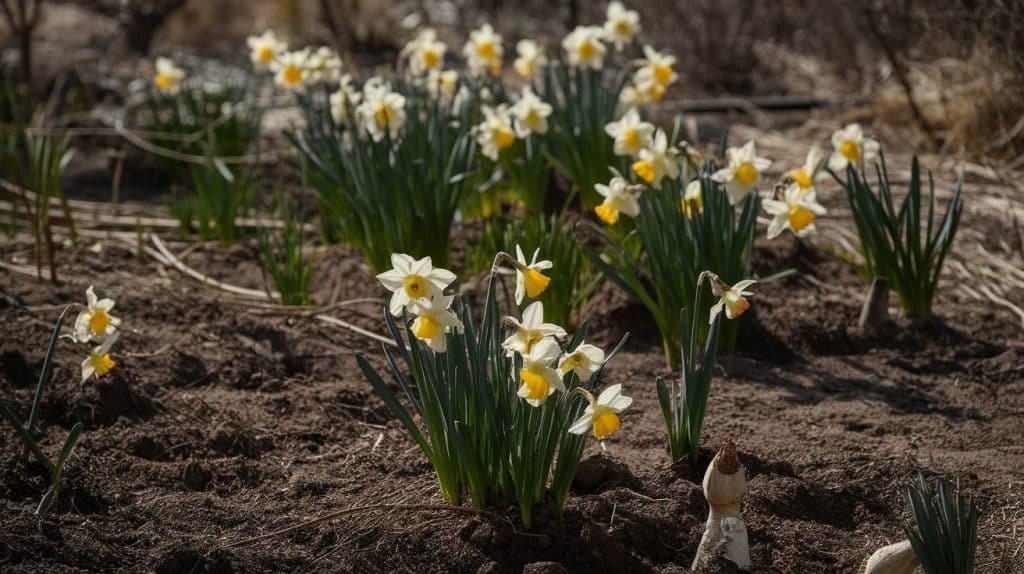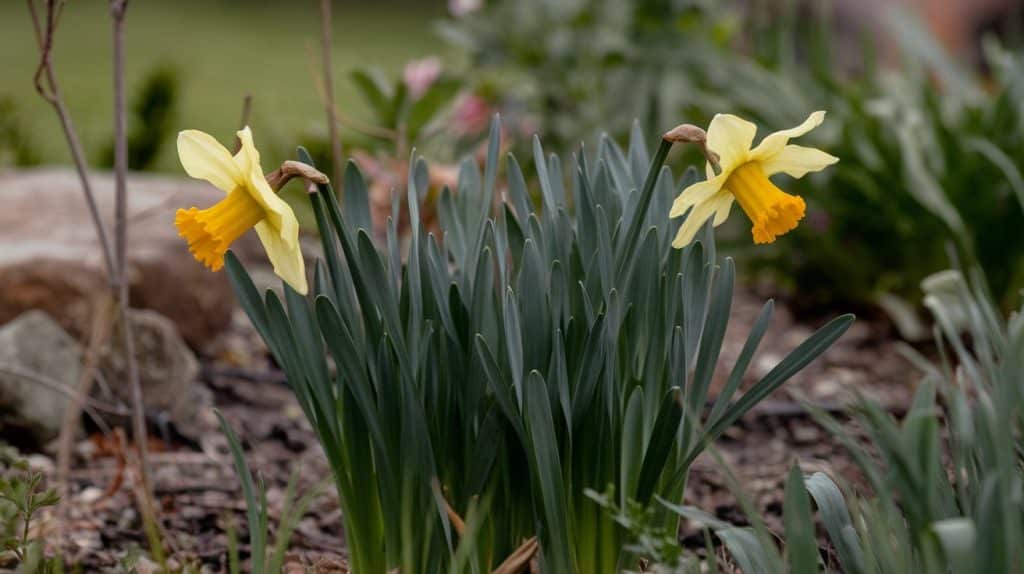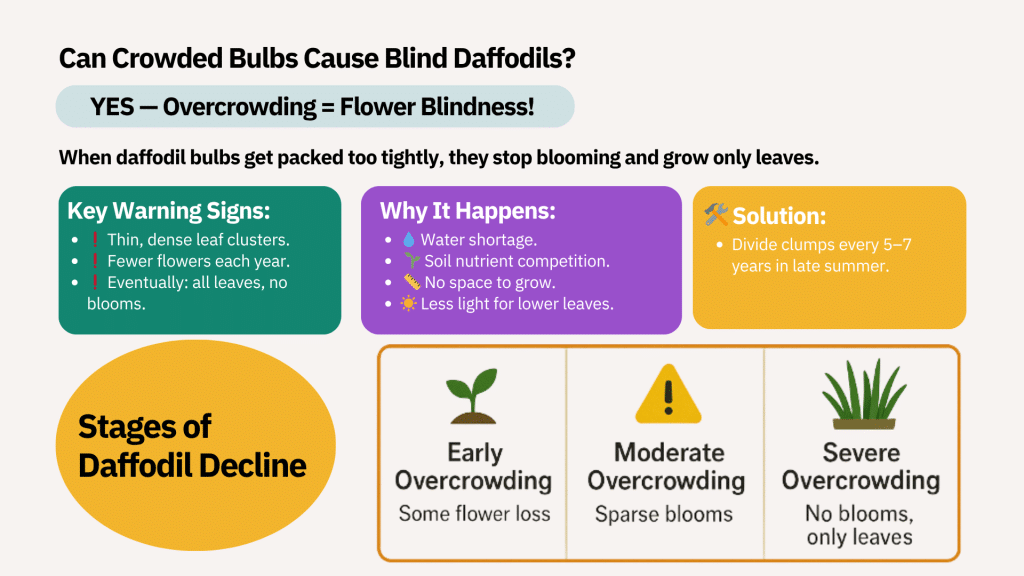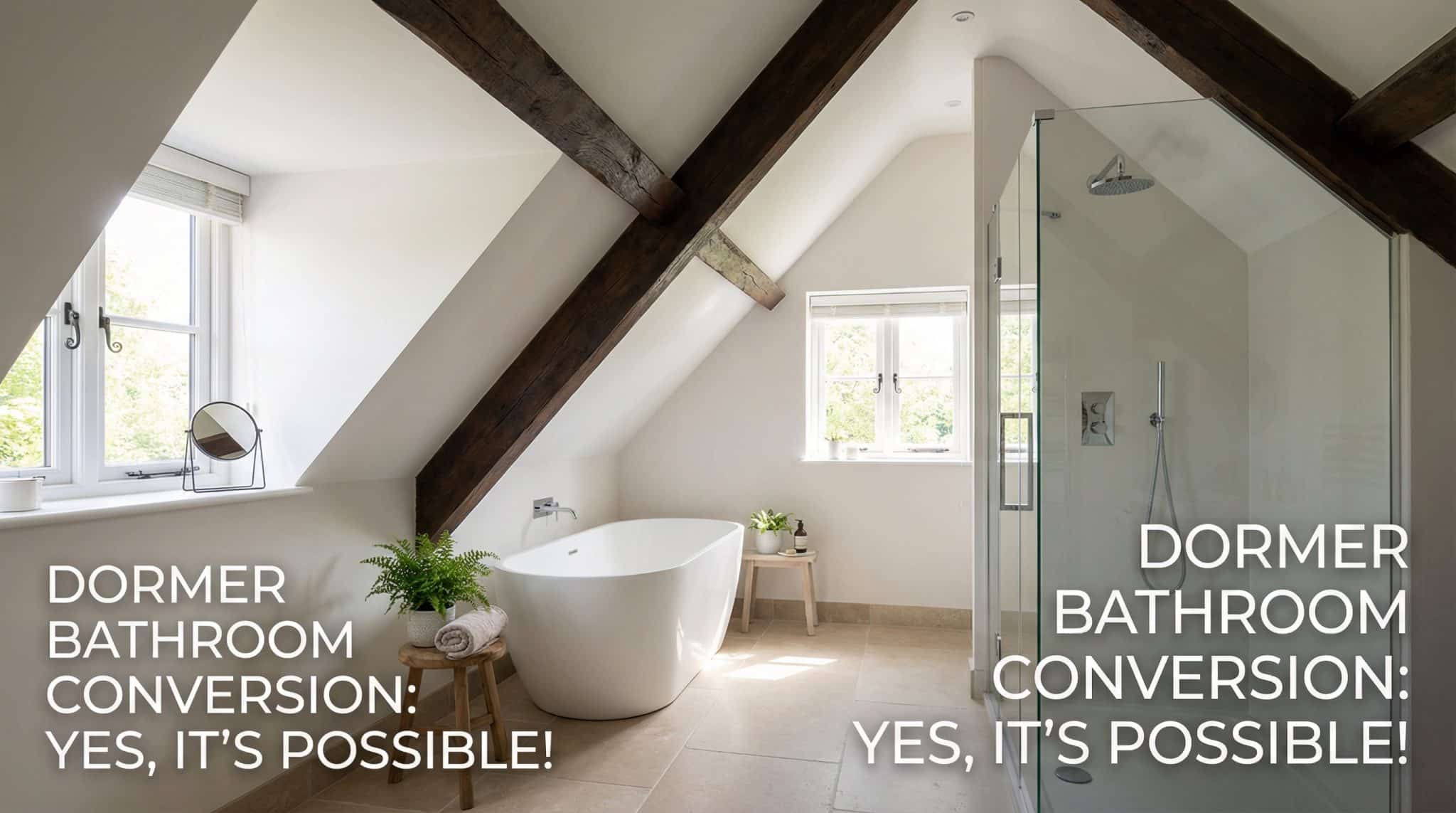Have you ever waited all spring for your daffodils to bloom, only to see green leaves and no flowers?
This frustrating problem affects countless gardeners worldwide each year. Blind daffodils produce healthy foliage but stubbornly refuse to flower. Gardeners often refer to this as daffodil blindness.
The disappointment feels overwhelming when colorful blooms fail to appear. Understanding why this happens can save your entire spring display. These solutions apply to planted beds and containers alike.
This complete guide will help you identify the causes and implement practical fixes. You’ll learn proven solutions to get your daffodils blooming beautifully again. Follow the steps in order to help them produce blooms reliably.
From proper planting depth to feeding schedules, I’ll cover every essential detail. Let’s turn those disappointing green shoots into the beautiful yellow blooms you deserve next season. These practices strengthen bulbs for next season’s display.
What Are Blind Daffodils?
Blind daffodils are bulbs that grow leaves but do not produce flowers. The plants appear healthy, with green foliage emerging normally.
However, when blooming time arrives, no flower buds appear. This condition hinders gardeners who expect colorful spring displays. This can occur across Narcissus varieties.
The term “blind” refers to the absence of flower buds. These bulbs have temporarily lost their ability to bloom.
Blind daffodils differ from completely dead or dormant bulbs. They still show signs of life through leaf growth. Importantly, daffodil bulbs remain viable underground.
The problem lies in their flowering mechanism, not overall health. Many gardeners mistake blind daffodils for late bloomers.
They keep waiting for flowers that never come. Recognizing this condition early helps you take corrective action. Early action also protects the bulb’s food reserves.
Why Do Blind Daffodils Stop Blooming?

Blind daffodils fail to bloom when past conditions stress the plant. Their nutrient use shifts from flowering to survival mode. This pattern is typical of daffodil blindness.
When resources become limited, they prioritize survival over flowering. Environmental stress also triggers blindness in daffodils. Incorrect planting depth can trigger this shift.
Poor growing conditions force bulbs to conserve energy. They skip flowering to ensure they survive another year. Low soil fertility often intensifies the problem.
Common Causes Include:
- Shallow planting occurs when bulbs are placed too close to the surface.
- Poor soil nutrition occurs from a lack of phosphorus and potassium.
- Overcrowding results when too many bulbs compete for space.
- Early leaf removal involves cutting foliage before it naturally yellows.
- Insufficient sunlight provides less than six hours of daily exposure.
- Waterlogged soil keeps roots constantly sitting in wet conditions.
- Temperature fluctuations lead to extreme weather changes throughout the seasons.
- Bulb fly damage destroys developing buds.
- Basal rot infects the bulb base and weakens plants.
Comprehending these causes helps prevent future blindness. Most issues stem from improper care or planting mistakes. A quick review of care and placement often reveals the cause of daffodil blindness.
How Daffodil Blindness Affects Plant Growth?

Blind daffodils redirect all energy toward leaf production. Without flowers to support, leaves often grow larger and greener. This vigorous foliage growth masks the underlying problem. Managing daffodil foliage after bloom is crucial for recovery.
Impact on bulb development: The bulb continues storing energy through photosynthesis. However, without flowering, natural bulb division slows down. New offset bulbs form more slowly than in flowering plants.
Season after season, bulbs that don’t bloom begin to decline. With each missed bloom, the energy base becomes less stable. Eventually, even leaf production may decrease significantly.
Pro Tip: Mark blind daffodils during spring to track them. This helps you identify problem areas in your garden.
Neighboring plants may also suffer from overcrowded conditions. Blind daffodils still compete for water and nutrients. Their presence affects the overall balance of the garden. They may also deplete nearby soil nutrients.
What’s Happening Inside Blind Daffodils?
Inside blind daffodil bulbs, biochemical processes undergo dramatic shifts. The flower bud initiation fails during the previous summer. This failure occurs when bulbs are not provided with proper conditions. Imbalanced soil fertility during that period can contribute to failed bud initiation.
| Internal Change | What Happens | Impact |
|---|---|---|
| Nutrient Response |
|
Energy restoration is attempted, but flower formation lacks the needed reserves. Vegetative growth takes precedence over reproductive development. |
| Hormonal Imbalance |
|
The proper flowering response becomes blocked, and the bulb gets stuck in vegetative mode. The normal growth cycle is completely interrupted. |
| Cell Division Problems |
|
The microscopic flower bud never forms, and the developmental energy is redirected elsewhere. All flowering potential is lost for that season. |
Important Note: These changes are reversible with proper care and maintenance. Most blind bulbs can recover within one to two seasons.
Can Crowded Bulbs Cause Blind Daffodils?
Yes, overcrowding ranks among the top causes of blindness. Daffodil bulbs multiply naturally through the production of offsets. Without division, competition intensifies yearly.

Signs of overcrowding: Dense clumps of thin leaves indicate congestion below ground. Flowering decreases gradually as space diminishes. Eventually, only leaves emerge from packed areas. Densely planted drifts often decline without timely division.
Crowded bulbs compete for:
- Water during critical growth periods.
- Nutrients from the surrounding soil.
- Physical space for expansion.
- Light reaching lower leaves.
When to divide crowded clumps?
| Clump Age | Signs | Action Needed |
|---|---|---|
| 3-4 years | Slight decrease in flowers | Monitor closely |
| 5-6 years | 50% fewer blooms | Plan division |
| 7+ years | Mostly leaves, a few flowers | Divide immediately |
Things to Consider: Mark clumps during the blooming season. Divide in late summer when bulbs are dormant. Replant immediately at the proper spacing and depth.
Can Blind Daffodils Be Saved?

Most blind daffodils recover with appropriate intervention. The key lies in addressing the underlying causes promptly. Recovery typically takes one to two growing seasons. With patience, they can bloom again.
Recovery methods that work:
Feed bulbs properly: Apply low-nitrogen, high-potassium fertilizer in early spring. Bone meal or bulb food works excellently. Feed again when shoots emerge.
Improve growing conditions: Transplant bulbs to sunnier locations if needed. Amend the soil with compost for better drainage. Ensure adequate spacing between bulbs.
Let foliage mature: Allow leaves to yellow naturally before removal. This process takes a minimum of 6-8 weeks. Braiding or tying leaves reduces unsightliness.
Success rates vary by cause:
- Overcrowding: 90% recovery after division.
- Poor nutrition: 80% recovery with feeding.
- Shade issues: 70% recovery after relocation.
- Disease damage: 50% recovery possible.
How to Prevent Blind Daffodils from Coming Back?
Follow this comprehensive seasonal care cycle to revive dormant daffodils and ensure beautiful blooms return to your garden every spring.

Proper timing and consistent maintenance throughout the year prevent daffodil blindness and guarantee reliable flowering.
Healthy daffodils need regular care to bloom each spring. Preventive habits can make all the difference over time. Consistency matters more than perfection.
Location considerations? Choose sites with morning sun, at the very least. Avoid low areas where water collects. Plant away from aggressive perennials. Consider natural drainage patterns. Space planted bulbs consistently to maintain airflow.
Important Note: New bulbs need extra care initially. First-year flowers may be smaller while establishing.
Easy Care Tips for Blind Daffodils
Restoring blind daffodils starts with steady, mindful action. Use these clear tips to bring back blooms in future seasons.
- Mark affected clumps during spring growth using stakes or labels to track problem areas.
- Test soil pH and adjust to 6.0-7.0 range for optimal nutrient uptake by bulbs.
- Apply low-nitrogen fertilizer as shoots emerge, as excess nitrogen can prevent flower formation.
- Allow foliage to yellow naturally before removal, allowing 6-8 weeks for the bulb to recharge its energy.
- Divide overcrowded bulbs every 5-6 years to prevent competition for space and resources.
- Ensure bulbs receive at least 6 hours of sunlight daily for proper energy storage.
Conclusion
Blind daffodils challenge even experienced gardeners, yet recovery remains highly achievable. Simple adjustments to planting depth, feeding routines, and spacing make significant differences.
Your commitment to proper foliage care pays off with renewed blooms. Each small improvement builds toward spectacular spring displays.
Success comes from addressing problems systematically rather than hoping for change. Whether dealing with overcrowding or poor nutrition, solutions exist for every situation.
Next spring’s flower show depends on actions taken today. Your garden deserves the cheerful yellow blooms that make daffodils special.
Take the first step toward healthier bulbs this season.
Found this guide helpful? Share your thoughts or questions about blind daffodils below, and let’s build a knowledge base together!














